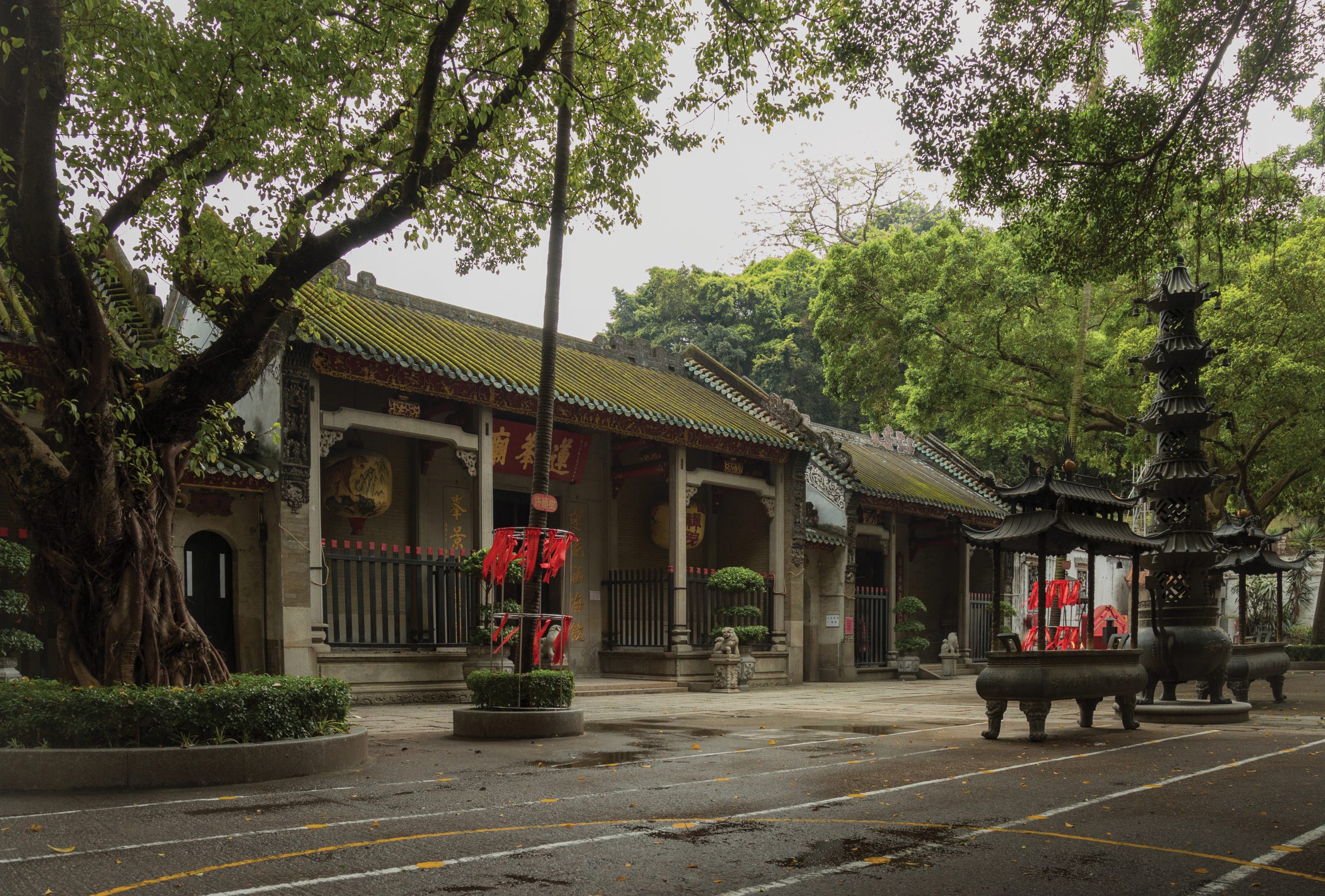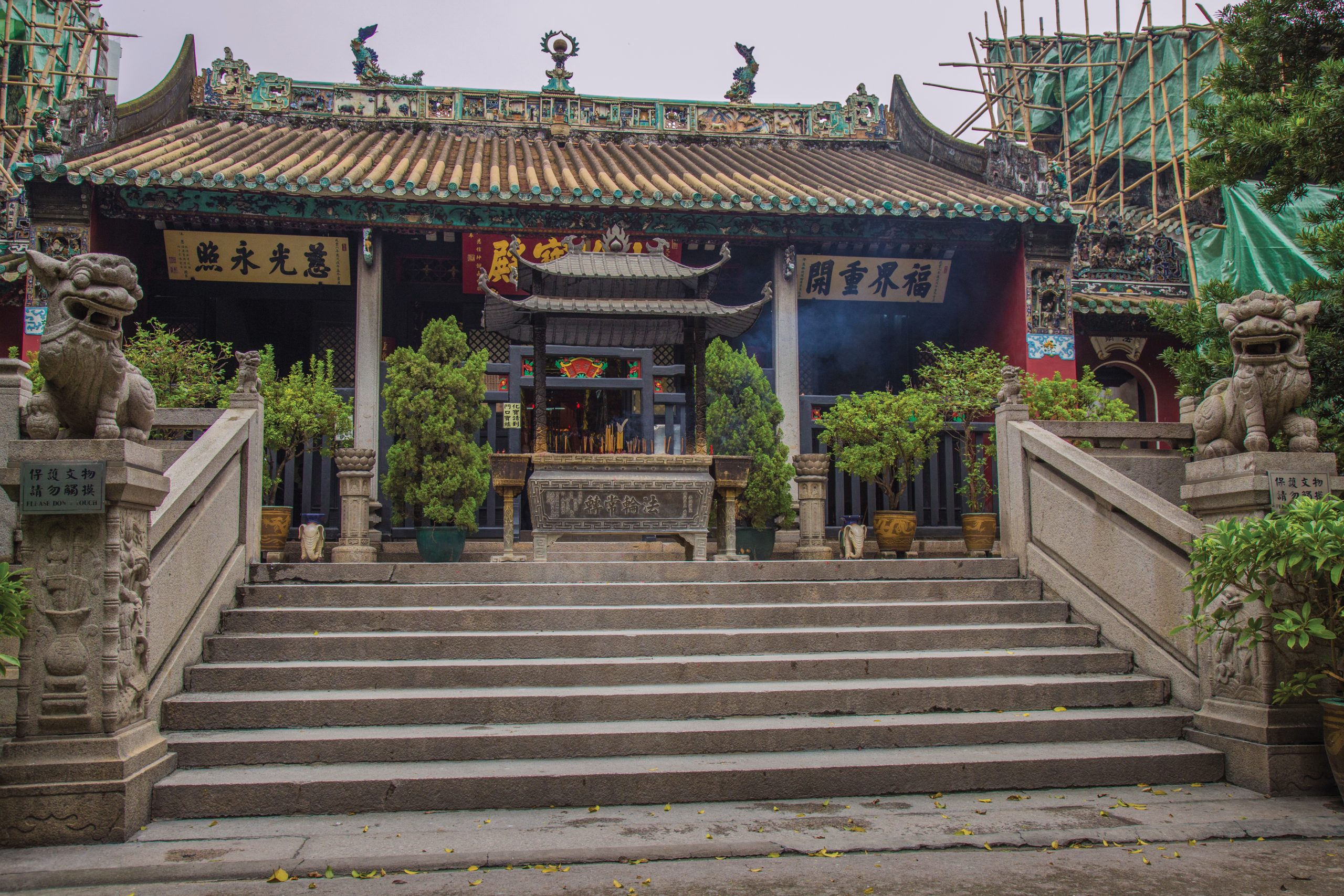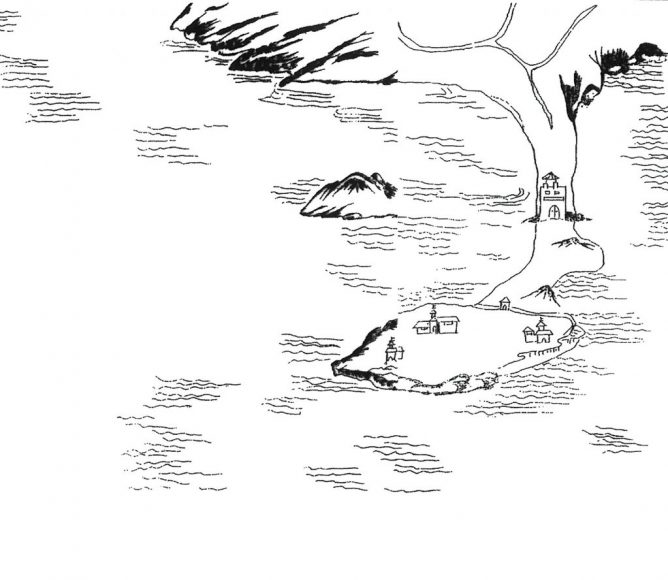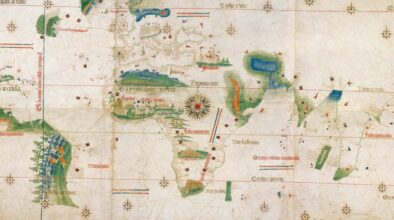The oldest settlement in the Macao peninsula
Many visitors to Macao seek out the Kun Iam temple to marvel at its shrines, gilded statues, and terraced gardens. But few realise that they are standing in what little remains of the oldest settlement in the peninsula – Mong‑Ha village.
Historians believe that more than 500 households arrived here in 1386, in the 19th year of Emperor Hong Wu of the Ming dynasty, from Fujian province on the southeast coast. They built a village with stone gates and stone walls, and named their new home Mong‑Ha (Wangxia, in Mandarin), which translates as “facing Xiamen.”
For nearly 600 years this rural Chinese village remained untouched by the Portuguese, who arrived in Macao in 1557 and established a settlement nearby. It was only in 1846, with the arrival of Governor João Maria Ferreira do Amaral, that conflict arose. Eager to impose Portuguese rule, he expelled the Chinese customs officials from Mong‑Ha, seized land, and forced local farmers to pay taxes to him, rather than the government in Beijing.
Urbanisation of the area began in the early 1900s as fields were filled in and peasant houses demolished to make way for new roads, schools, factories, housing, and a military barracks.
Most of Mong‑Ha has been lost to history. Only two temples, the Kun Iam and Lin Fung (Lotus Temple), still stand as reminders of this ancient village.

The early evolution of Mong-Ha
The people who built the first Mong‑Ha village were farmers. They chose the rich soil between Guia Hill and Monte to the south, and the low‑lying hills of Montanha Russa to the north, to cultivate rice. The households had five family names, of which Ho was the most common. For centuries, it was an unpretentious row of peasant homes, criss‑crossed by 130 lanes and alleys.
The fishermen came later in the Ming dynasty, migrating to Macao from different parts of Guangdong and Fujian. They built the A‑Ma temple, dedicated to the goddess of the sea, whose protection they asked for before setting out. The temple remains one of the most famous in the city.
The Portuguese arrived in Macao in 1557. They built their settlement near the sea, constructing a fortress on nearby Guia Hill. Despite the close proximity, the farmers in Mong‑Ha village were left alone to continue their traditional life.
In 1744, the mandarin of Xiangshan, the county which includes Macao, appointed an official to take up residence in Mong‑Ha. His presence in the village served as a symbol of imperial rule over the area. But this relative peace was not to last.
Portugal subverts Chinese authority
Everything changed in Mong‑Ha with the arrival of the new governor, João Maria Ferreira do Amaral, in 1846. He had served previously as deputy governor for Angola, after a distinguished career in the Portuguese navy; he lost his right arm in Brazil’s brief war of independence in 1821, his first year of service.
“Queen Maria II sent him to Macao to establish Portuguese authority and make it a free port, to compete with the port of Hong Kong established a few years earlier,” says José Luís de Sales Marques, President of the Institute of European Studies of Macau and a researcher of local history.
“To achieve this, he seized both the existing Chinese and Portuguese customs houses, and expelled the Chinese customs officials which created a problem. Before that, the Chinese government had been accommodating toward the Portuguese,” he says. The officials were forced to return to mainland China, along with their families, while Amaral destroyed the imperial symbols and banners of the customs houses. He then annexed all of the land between the city walls and the Border Gate, bringing it under Portuguese rule.

Amaral instituted eight measures in his effort to assert Portuguese sovereignty over the whole peninsula. One, the construction of a road from the Portuguese walled city to the Border Gate, forced residents to move their ancestral graves, an outrage to the people of Mong‑Ha village. He also imposed land leases on the farmers, claiming that they were using Portuguese land and owed taxes to the Portuguese authorities, not the Chinese mandarins. Each of the measures brought the Portuguese closer to making Macao a free port, but that ambition came at a price.
On 22 August 1849, a group of seven villagers intercepted Amaral as he was taking his horse for his morning ride. They pulled him from his horse and cut off his head. Today, the assassins are seen as patriotic heroes in China.
The murder happened just outside the Lin Fung temple. Nearly a year earlier, on 3rd September 1839, mandarin Lin Zexu had stayed there. The Imperial Commissioner in Guangzhou, he was charged by the Emperor with eliminating opium trading. During his visit, he met Portuguese officials and urged them to ban the trade in the city, and be neutral in the conflict between China and Britain over the issue. That conflict escalated into war, and the resulting Treaty of Nanjing led to the opening of Chinese ports to international commerce and the cession of Hong Kong. Today, a small museum at the temple commemorates his visit with a three‑metre tall statue of Lin.
In 1866, the Portuguese completed construction of a fort on Mong‑Ha Hill; the original fort complex was erected by Amaral the year of his death. His fear of Chinese invasion had lingered and for the first time, cannons in the city pointed toward the mainland, not at the sea. The fort became a strictly military area, off-limits to the public.

Diplomacy comes to Mong-Ha
The Kun Iam temple is famous as the location where China and the United States signed their first bilateral treaty. Taking its name from the Mandarin pronunciation of Mong‑Ha, the Treaty of Wangxia was signed on 3rd July 1844.
U.S. President John Tyler dispatched Caleb Cushing, a Massachusetts lawyer, to China to serve as his representative in the negotiations. The U.S. sought treatment for American companies and individuals equal to that granted to the British by Beijing in the treaty which ended the First Opium War.
The meeting took place in Macao after the Emperor refused to allow Cushing into Beijing. The Qing Empire chose Qi Ying, governor of Guangdong and Guangxi provinces, as their representative. The resulting treaty granted the U.S. the same rights as the Treaty of Nanjing, also negotiated by Qi Ying.
The Americans were given the right to learn Mandarin; to buy land in the five treaty ports, and to build churches and hospitals there; fixed tariffs at treaty ports; most‑favoured‑nation status; and extraterritoriality, which guaranteed that American citizens could only be tried by U.S. consular officers, not Chinese courts. Kun Iam temple still holds the tablet on which the two men signed the treaty.
President Tyler ratified the treaty in January 1845, following passage by the U.S. Congress. Today, China considers it ‘an unequal treaty,’ one of many it was forced to sign during the Qing dynasty, under duress from foreign powers.

An ancient village unmade
During his visit to the Kun Iam Temple in 1844, Commissioner Qiying noted that there were 819 families living in the Mong‑Ha area, between the gate of St. Anthony and the Border Gate. “The terrain is full of cultivated land, houses, and graves,” he wrote. An 1887 census recorded a population of 3,000 in Mong‑Ha, many of whom lived off the land.
Redevelopment of the area began in the early 1900s as the government sought to increase the urban area of the city, and to improve the sanitary conditions, especially in relation to controlling malaria. The expropriation of land and homes began in 1901 with the seizure of 3,500 square metres of Mong‑Ha village.
Redevelopment of the area began in the early 1900s as the government sought to increase the urban area of the city, and to improve the sanitary conditions, especially in relation to controlling malaria
A glance at the map of Macao shows how the roads built in this new area were long and broad, neatly arranged in a grid pattern. It became a mixed‑use area, with the first fireworks factory in 1911; the last one in Mong‑Ha, Po Seng, did not close until the 1970s. There were other factories and educational establishments, like Dom Bosco College and the Sacred Heart Canossian College, which was originally leased a piece of land in 1919 to build an orphanage. Additional structures included public buildings like the Post and Communications Company, as well as two‑storey residential buildings, cemeteries, military facilities, a police station, and a municipal market.
Since the redevelopment period, some of the buildings are no longer used for industry and have been converted to services. The village they replaced is all but lost.
“Little remains of Mong‑Ha today,” said Sales Marques. “One important part is the Kun Iam temple, the earliest in Macao. In addition to a small number of Buddhist monks and ancestral shrines, it holds images of members of the old families. A reminder of the ancient village, and the people who once called it home.”




